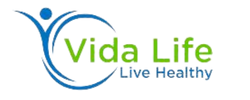Headaches can be debilitating. But there are steps you can take to alleviate their symptoms.
Keep a headache diary to help identify triggers and patterns.
Avoid foods and beverages known to trigger headaches and migraines, including cured meats, chocolate, dairy products, artificial sweeteners and caffeine. Drink plenty of water daily to remain hydrated.
1. Deep breathing
Diaphragmatic breathing can help both prevent and treat migraines, so find a peaceful place where you can practice. Place one hand on your abdomen while resting the other on your chest – making sure that the hand on your belly protrudes while the one on your chest rises; repeat this exercise for five minutes.
Lin suggests using your diaphragm for slow and controlled breaths to activate the vagus nerve in your body, activating its parasympathetic nervous system – the part responsible for “rest and digest” activities). Calming this response can help lower blood pressure, heart rate, muscle tension, as well as headache symptoms. For best results, practice daily; however it can also be used when experiencing headache symptoms for quick relief in an instantaneous moment; just make sure not to overdo it; too much oxygen can lead to lightheadedness according to Riehl.
2. Heat or cold
Applying hot or cold compresses can provide significant pain relief and relaxation benefits to all types of headache sufferers. Heat (from a rice bag, heating pad or shower) helps relax tight muscles and decrease inflammation; cold constricts blood vessels to block pain signals to the brain.
Breathing exercises such as square breathing (inhale to a count of 4, hold your breath for four counts and exhale to four), guided imagery — such as visualizing soothing things such as waves or crackling fire — or exercise — which stimulates “feel good” chemicals in the brain to block pain signals — can all help lower stress levels and relieve discomfort.
Eliminating triggers like caffeine, nitrate-containing foods and those containing monosodium glutamate can significantly decrease headaches. A headache diary and eliminating problem foods may also assist in pinpointing causes.
3. Caffeine
Caffeine, a stimulant found in coffee beans, tea leaves, chocolate, kola nuts and the yerba mate plant, can help prevent headaches by narrowing blood vessels around the brain to ease pressure and pain. Furthermore, caffeine is an ingredient used in both over-the-counter and prescription painkillers.
Researchers have recently discovered that small doses of caffeine can boost the analgesic effect of certain over-the-counter migraine and TTH drugs, making them even more effective as adjunct therapies. Therefore, caffeine has become widely used as an adjuvant therapy option.
Caffeine has an antinociceptive (pain-relieving) effect in doses of 130 mg or lower, making it an invaluable component in complex analgesic formulations available over-the-counter such as those containing acetaminophen, paracetamol or nonsteroidal anti-inflammatory drugs.
However, excessive caffeine intake can cause headaches. People who rely on pain relievers to treat chronic daily headaches may become dependent on them and suffer a medication overuse headache (MOH), often precipitated by sudden withdrawal or overuse of caffeine products.
4. Massage
Massage involves gentle stroking, kneading and manipulation of skin, muscles, tendons and ligaments to reduce stress and alleviate pain. Massage also triggers endorphin release – natural painkillers that improve mood as well as pain management.
Studies support the efficacy of massage for relieving headaches. One small research project involved four people suffering from chronic tension-type headaches who received two to three massage sessions weekly over six months; their researchers discovered that massage reduced both frequency and intensity of headache attacks.
Your massage therapist may use various techniques to help you relax, such as effleurage (long, sweeping strokes), percussion and gentle kneading. In addition, they may apply pressure to trigger points – tight muscle areas that cause headaches. You can learn to self-massage using either fingertips on temples and scalp or by applying pressure at specific acupressure points on body.

